- Chemical Auxiliary Agent[6]
- Polymer[3]
- Other Inorganic Chemicals[1]
- Organic Salt[6]
- Halide ( Except Chloride )[3]
- Food Additives[6]
- Organic Intermediate[6]
- Chemical Reagents[3]
- Organic Acid[6]
- Daily Chemicals[1]
- Other Chemicals[6]
- Pharmaceutical[2]
- Nitrate[1]
- Feed Additives[3]
- Amine[1]
- Ester & Derivatives[2]
- Contact Person : Mr. Huang Eric
- Company Name : Qingdao Aurora Chemical Import & Export Co., Ltd.
- Tel : 86-532-68629711,68629712,68629733
- Fax : 86-532-68629713
- Address : Shandong,Qingdao,ROOM 821, NO 220 YANAN 3 ROAD,(POST ADMINISTRATION BUILDING),QINGDAO,CHINA
- Country/Region : China
- Zip : 266071
Related Product Searches:Coated Ascorbic Acid(Vitamin C) 97%-USP/BP Standard,High Quality,Ascorbic acid vitamin C, coated ascorbic acid
CAS No.: 50-81-7
Molecular Formula: C6H8O6
Molecular Weight: 176.13
Structural Formula:
Characteristics :white monoclinic system crystals or crystalline powder.
Application:
The melting point of Vitamin C is 190-192ºC, the Alpha is 20.5 º (c=10,H2O) and the water solubility is 333 g/L (20 ºC).
Vitamin C behaves as a vinylogous carboxylic acid where the electrons in the double bond (vinyl), hydroxyl group lone pair and the carbonyl double bond form a conjugated system. Because the two major resonance structures stabilize the deprotonated conjugate base of Vitamin C, the hydroxyl group in Vitamin C is much more acidic than typical hydroxyl groups. In other words, Vitamin C can be considered an enol where the deprotonated form is an enolate, which is usually strongly basic.
Vitamin C is widely used in many fields such as food , beverage, breeding and forage additives. Its main functions reflected in following 5 aspects :1.Keep food, fruits and beverage fresh and prevent them from producing unpleasant smell. 2.Prevent formation of nitrous amine from nitrous acid in meat products. 3.Improve dough quality and make baked food expand to its maximum. 4.Compensate the Vitamin C losses of beverage ,fruits and vegetablesduring processing procedures. 5.Used as nutritional element in additives. Feed additives.
Specification:
Item | Index |
Characteristics | White crystalline powder |
Identification | Positive reaction |
Melting Point | About 190°C |
PH | 2.1-2.6 |
Clarity Of Solution | Clear |
Mercury | ≤0.1ppm |
Zinc | ≤25ppm |
Arsenic | ≤3ppm |
Lead | ≤2ppm |
Loss on Drying | ≤0.1% |
Colour of Solution | ≤BY7 |
Copper | ≤5ppm |
Heavy Metals | ≤10ppm |
Iron | ≤2ppm |
Oxalic Acid | ≤0.2 % |
Sulphate Ash (Residue On Ignition) | ≤0.1% |
Specific Optical Rotation | +20.5°- +21.5° |
Assay | 99.0-100.5% |
Organic Volatile Impurities | Pass |
Usage:
Vitamin C takes part in a variety of metabolic processes in human body and helps in inducing the fragility of capillary vessel, and improving the resistibility to illness.
Packing and Storage:
Vitamin C is packed in 25KG net weight carton lined with PE bags(marks can be designed by customers).
Store Vitamin C in cool, dry and well closed place. The shelf life of Vitamin C is 2 years in original packages under the described conditions.
Keyword:
Vitamin C; L-Threo-2,3,4,5,6-Pentahydroxy-1-Hexenoic Acid-4-Lactone
Coated Ascorbic Acid(Vitamin C) 97%-USP/BP Standard








